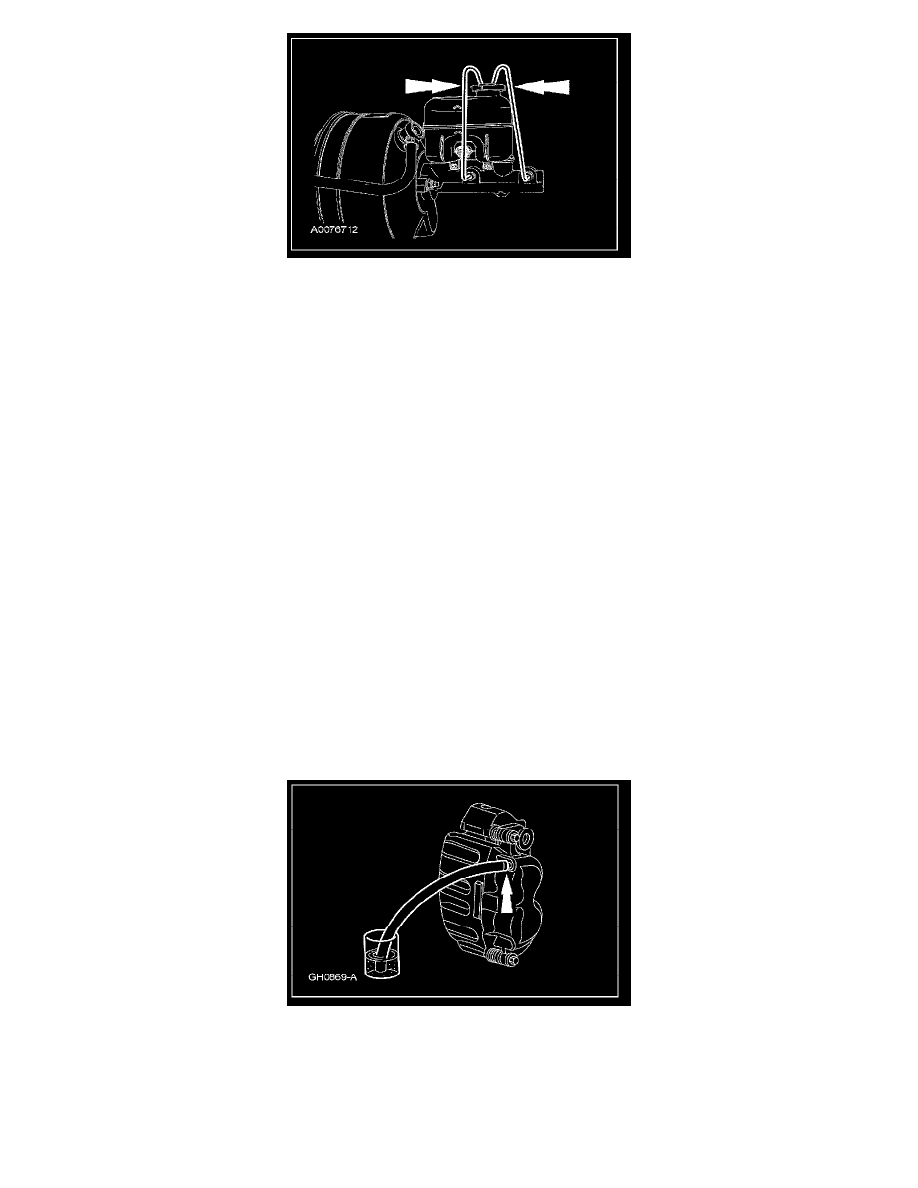F 150 4WD V8-5.4L Flex Fuel (2008)

3. Have an assistant pump the brake pedal until clear fluid flows from both brake tubes, without air bubbles.
4. Remove the short brake tubes and install the brake outlet tubes.
5. Bleed each brake tube at the brake master cylinder in the following sequence:
1
Have an assistant pump the brake pedal and then hold firm pressure on the brake pedal.
2
Loosen the rear brake tube fitting until a stream of brake fluid comes out. Have an assistant maintain pressure on the brake pedal while
tightening the brake tube fitting.
3
Repeat this operation until clear, bubble-free fluid comes out.
4
Refill the brake master cylinder reservoir as necessary. Repeat the bleeding operation for the front brake tube.
6. While the assistant maintains pressure on the brake pedal, tighten the brake tube fittings.
^
Tighten to 18 Nm (13 lb-ft).
Brake Caliper
WARNING: Do not use any fluid other than clean brake fluid meeting manufacturer's specification. Additionally, do not use brake fluid that
has been previously drained. Following these instructions will help prevent system contamination, brake component damage and the risk of
serious personal injury.
WARNING: Carefully read cautionary information on product label. For EMERGENCY MEDICAL INFORMATION seek medical advice.
In the USA or Canada on Ford/Motorcraft products call: 1-800-959-3673. For additional information, consult the product Material Safety
Data Sheet (MSDS) if available. Failure to follow these instructions may result in serious personal injury.
WARNING: Do not allow the brake master cylinder to run dry during the bleeding operation. Master cylinder may be damaged if operated
without fluid, resulting in degraded braking performance. Failure to follow this instruction may result in serious personal injury.
CAUTION: Brake fluid is harmful to painted and plastic surfaces. If spilled, wipe up immediately before damage to the painted or plastic
surface occurs.
1. Remove the brake caliper bleeder screw cap and place a box-end wrench on the bleeder screw. Attach a rubber drain hose to the bleeder screw and
submerge the free end of the hose in a container partially filled with clean, specified brake fluid.
2. Have an assistant pump the brake pedal and then hold firm pressure on the brake pedal.
3. Loosen the bleeder screw until a stream of brake fluid comes out. While the assistant maintains pressure on the brake pedal, tighten the bleeder
screw.
^
Repeat until clear, bubble-free fluid comes out.
^
Refill the brake master cylinder reservoir as necessary.
4. Tighten the brake caliper bleeder screw to 20 Nm (15 lb ft), remove the rubber hose and install the bleeder screw cap.
